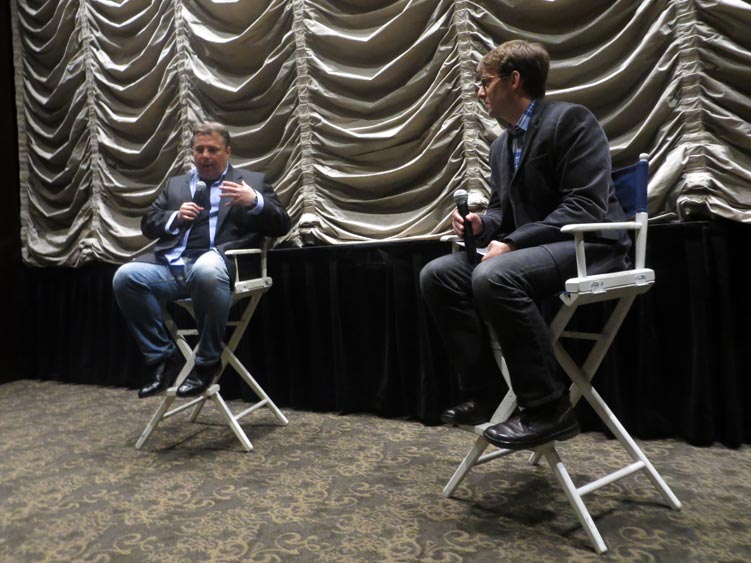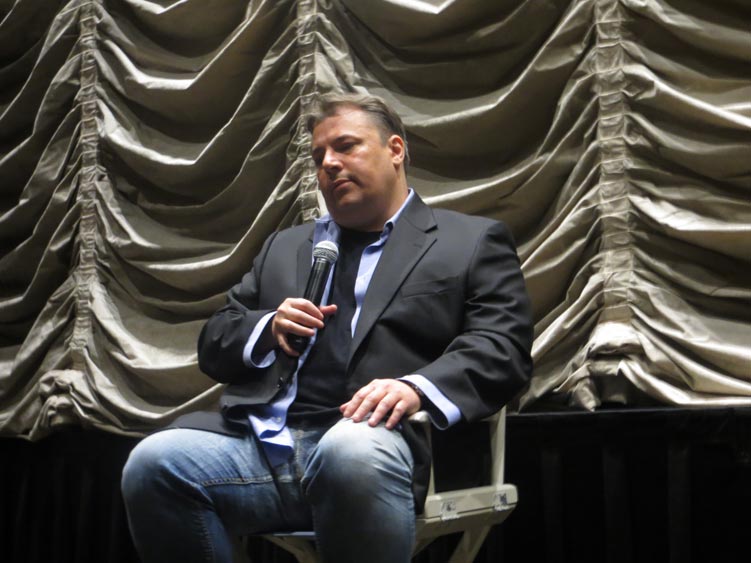The following questions and answers are excerpted from a conversation that followed the NBR screening of Salinger.
Let’s start by talking about the unique backstory to making this film.
Salerno: I grew up in a house where Salinger was a church. My mom was a huge fan and turned me onto his work, but like everyone, I had no idea about the man, I just knew the work. I started researching this project and found out that J.D. Salinger landed on D-Day, that Salinger participated in these horrible battles, that he lost the love of his life, Oona O’Neill, to Charlie Chaplin. There were so many things I didn’t know – that he was in a mental institution, that he married a Gestapo agent. I had to make this movie. When I started I was so naïve I thought I’d spend six months and $300,000. And I spent ten years and $2 million dollars. It really took over. I was thirty when I started and forty when I finished. It’s been an unusual process.
“J.D. Salinger walked into that concentration camp, and he never walked out. War made him as an artist, but it broke him as a man.”
Can you talk about some of the stylistic choices in this film, from the editing to the riveting soundtrack?
Salerno: I had a day job so we’d have to shoot for a month or two and then stop. The best tip I can give is to wait until you finish shooting to start editing. We edited during this process, which was tough. Then you get your editor going “It would be great if . . . “, and then you go out and try to get that stuff. Not a good idea.
The music was by a composer named Lorne Balfe, the co-composer of Frost/Nixon, and Inception. I couldn’t afford him, so in order to convince him to take the project I told him he could have the rights to the soundtrack. He worked on the film for three and half years, and there were certain sections of film he couldn’t see so he was composing blind, like the ending. I told him “There’s this big thing at the end and it needs to be really dramatic” and he asked “What’s it like?” and I was like “Uh, it’s big news and make it really dramatic!” There are some pieces of music in here that I really love, particularly the one that plays over Oona. When I read about that love triangle, it really hooked me to do this movie – a love triangle between Charlie Chaplin, J.D. Salinger, and Eugene O’Neill’s daughter! There were so many things about his life that were like that.
How did you conception of the man and the artist change as you made this film?
Salerno: Here’s something that I learned editorially that was really fascinating. When we had the veteran that served in the fourth division alongside Salinger talk about seeing bombs fall in his living room, when that scene was earlier in the film, people had a negative view of J.D. Salinger. When we moved that scene later in the film, people understood that J.D. Salinger walked into that concentration camp and he never walked out. That’s really the thesis of the film, that the War made him as an artist, but it broke him as a man. We wouldn’t be talking about J.D. Salinger if it wasn’t for World War II. All of the stories for which we know Salinger – Esmé, Bananafish, Nine Stories, Catch, Franny, Zooey, they were all written after the War and deeply informed by his experiences. That was an astonishing thing, to see how much the War imprinted him, and how before the War, Oona O’Neill imprinted him. Meaning that he lost Oona to Chaplin when she was eighteen and Chaplin was fifty-four. Salinger tried to repeat that with multiple young women, so by the time he got to Joyce Maynard, he was fifty-four and she was eighteen. His life had literally come full circle. He was well into his fifties and still fighting a fight with Charlie Chaplin that he had lost in 1943. I can’t imagine what it would be like to have the woman you loved more than anything in the world marry the most famous man in the world and to read about it in a newspaper. That was a moment, like three or four others, that I was desperately trying to tell in the film, that level of pain. What’s astonishing about the War is that it was one year, and in that one year, he completely changed. J.D. Salinger went into the War as a Park Avenue rich kid, and he came out of the War as an incredibly battle-damaged vet. Today we see soldiers coming back from Iraq and Afghanistan with PTSD. At least now we know what it is, but back then it had no name, and this guy was unequivocally suffering from it.


